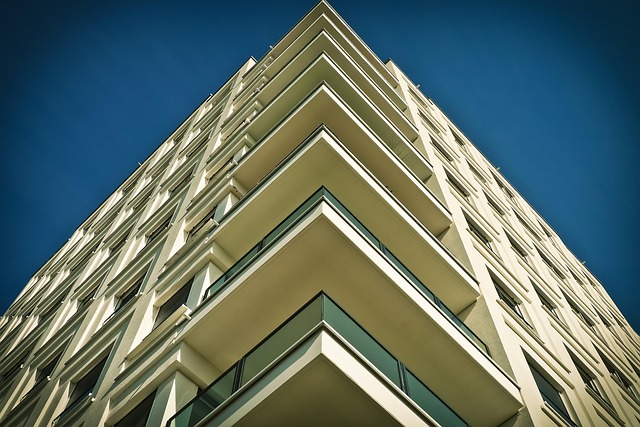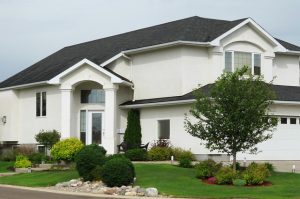Property and Casualty Insurance for Commercial Buildings is a crucial risk management tool that protects businesses from unforeseen events impacting their physical assets. This specialized insurance covers buildings against damage, business interruption, liability claims, and extra expenses during rebuilding. It addresses unique risks like customer/employee injuries and natural disasters. Effective coverage requires accurate risk assessment, understanding policy exclusions (e.g., war, floods), and navigating the claims process. Real-world examples highlight the necessity of tailored insurance for structural losses, legal defenses, and lost revenue. Choosing an insurer involves research, comparing rates, evaluating financial health, and ensuring customizable options meet specific business needs. Staying informed about evolving trends, like technology integration and cyber liability coverage, is vital for protecting assets in a dynamic global market.
In today’s dynamic business landscape, securing your commercial space with comprehensive Property and Casualty Insurance is paramount. This article guides you through the intricacies of Commercial Property Insurance, offering insights into crucial aspects like understanding policy types, assessing risks, common peril exclusions, and navigating claims processes. We explore real-world case studies, highlight the role of casualty insurance, and provide tips for choosing the right provider. By delving into these key areas, businesses can safeguard their investments and maintain resilience in the face of unforeseen events.
Understanding Commercial Property Insurance

Commercial property insurance, a crucial component of risk management for business owners, is designed to safeguard assets and provide financial protection against unforeseen events. This specialized form of Property and Casualty Insurance covers buildings, structures, and other physical assets within commercial spaces. Unlike residential policies, commercial insurance accounts for the unique risks associated with businesses, including liability for injuries or damages to customers and employees.
It typically includes coverage for direct physical damage, such as fires, storms, or vandalism, ensuring that rebuilding and repair costs are met. Additionally, it offers business interruption protection, compensating owners for lost revenue during periods when the property is unoccupiable due to insured events. Understanding these nuances is essential for business leaders aiming to mitigate risks effectively in today’s competitive market.
Types of Coverage for Commercial Buildings

Commercial buildings require a comprehensive property and casualty insurance policy to protect against various risks unique to their operation. These policies typically cover physical assets such as structures, fixtures, and equipment, providing financial compensation in case of damage or loss due to perils like fire, theft, vandalism, or natural disasters. Beyond structural protection, commercial insurance may include liability coverage, safeguarding businesses from claims related to injuries sustained on the premises, property damage to others’ belongings, or professional errors and omissions.
The specific types of coverage can vary depending on the nature of the business and the building’s use. For example, policies for retail spaces might emphasize loss of inventory and revenue during periods of closure due to perils like theft or fire. In contrast, office buildings may benefit from coverage for business interruption, ensuring financial stability during temporary closures caused by insured events. Additionally, commercial insurance often includes provisions for extra expenses incurred during the rebuilding or repair process, ensuring businesses can continue operations despite setbacks.
Assessing Risk and Determining Policy Needs

When it comes to commercial spaces, assessing risk is a meticulous process that involves careful consideration of various factors. Property and casualty insurance for commercial buildings aims to safeguard businesses from potential losses, so understanding the risks is paramount. Insurers will evaluate the structure’s age, construction materials, location, and potential hazards like fire, theft, or natural disasters. Additionally, the types of activities conducted within the building play a significant role in risk assessment. For instance, a warehouse storing flammable goods poses different risks than an office building.
This analysis directly informs the determination of policy needs. Commercial property insurance policies are tailored to cover specific risks, offering peace of mind for business owners. Coverage options may include protection against physical damage, liability for visitor injuries, and loss of income during periods of reconstruction. By assessing these risks accurately, insurers can create comprehensive policies that meet the unique requirements of each commercial space, ensuring businesses are adequately protected.
Common Perils and Exclusions in Commercial Policies

Commercial property insurance policies typically cover a wide range of perils, but there are certain risks that are commonly excluded. Understanding these exclusions is crucial for business owners when navigating the world of property and casualty insurance for commercial buildings. Some of the most common perils covered include damage from fire, storms, hail, flooding, and vandalism. These are essential protections for businesses as they can help restore operations and financial stability in the event of unforeseen events.
However, policies usually exclude certain high-risk or unusual events, such as war, nuclear incidents, earthquakes, and floods (in some cases), which require separate coverage. Additionally, regular maintenance and upkeep are generally not covered; policyholders are responsible for ensuring their properties meet safety standards to avoid preventable damages. This distinction is vital in managing expectations and ensuring adequate protection for commercial spaces.
The Role of Casualty Insurance in Commercial Spaces

In the realm of commercial property insurance, Property and Casualty Insurance for Commercial Buildings plays a pivotal role in safeguarding businesses against potential risks and financial losses. This type of insurance provides comprehensive coverage for structures, including their physical assets and contents, against perils such as fire, theft, vandalism, natural disasters, and more. By offering protection against these unforeseen events, it enables business owners to maintain continuity, ensuring they can quickly recover and resume operations with minimal disruption.
Casualty insurance, a key component of property coverage, specifically addresses liabilities arising from accidents or injuries occurring on the premises. This includes legal expenses, medical costs, and damages awarded in lawsuits related to visitor or employee safety. For commercial spaces, where there’s often high foot traffic and diverse operations, casualty insurance acts as a shield against significant financial exposures, protecting businesses from potential claims and ensuring their long-term viability.
Claims Process and How to Navigate It

When it comes to property and casualty insurance for commercial buildings, navigating the claims process is a crucial step in ensuring your business’s financial security after an incident. The first step is to review your policy thoroughly to understand the specific coverage details and exclusions. This knowledge will help you determine which types of losses are insurable and how much assistance the insurance provider can offer.
During a claim, it’s essential to document every aspect of the damage or loss as accurately as possible. Take photos of the affected areas, keep records of repairs or replacement costs, and maintain all communications with your insurance company. Promptly file your claim and cooperate fully with the insurer’s requests for information or documentation. This efficient navigation can significantly speed up the claims process and ensure a smoother recovery for your business after an unexpected event.
Case Studies: Real-World Examples of Commercial Property Insurance

In the realm of commercial property insurance, real-world examples serve as powerful case studies that highlight both the importance and diverse applications of this vital coverage. Consider a mid-sized retail mall in a bustling metropolis that suffers extensive damage due to a severe storm. Despite having comprehensive general liability insurance, the mall owners quickly realize that their policy lacks specific coverage for physical property damage. This scenario underscores the crucial need for Property and Casualty Insurance for Commercial Buildings, which specifically addresses structural losses caused by perils like storms, fire, or vandalism.
Another instance involves an office complex that becomes a breeding ground for litigation after a toxic mold outbreak. The building’s owners, despite having standard commercial insurance, find themselves vulnerable to lawsuits from tenants who developed health issues due to the contamination. This case study demonstrates how comprehensive Property and Casualty Insurance policies designed for commercial spaces can include provisions for mold remediation, legal defense costs, and loss of rental income, thereby fostering a safer and more secure business environment.
Choosing the Right Provider for Your Business

When selecting a provider for property and casualty insurance on your commercial building, it’s crucial to do thorough research. Look for insurers with a strong reputation in covering commercial properties, offering competitive rates, and providing comprehensive coverage options tailored to your business needs. Check their financial stability and customer reviews to ensure they deliver on promises during claims processes.
Consider the type of property you have, its value, location, and potential risks like natural disasters or vandalism. Compare policies, understanding what’s covered, exclusions, and deductibles. Choose a provider that offers flexible coverage options, responsive service, and prompt settlement of legitimate claims to protect your business interests.
Staying Informed: Recent Trends in Commercial Property Insurance

In the dynamic landscape of commercial real estate, staying informed about property insurance trends is paramount for business owners. Recent developments in Property and Casualty Insurance for Commercial Buildings reflect a growing emphasis on comprehensive coverage that caters to evolving risks. One notable trend is the increased use of advanced technology like smart sensors and AI-driven risk assessment tools, which enable insurers to offer more tailored policies based on real-time data. This shift enhances protection for commercial spaces by proactively identifying potential hazards.
Additionally, there’s a growing demand for cyber liability coverage as digital transformation continues to reshape businesses. With the rise of remote work and increasing cyber threats, commercial property insurance policies are now incorporating cyber risks, ensuring that business owners are protected against financial losses due to data breaches or cyberattacks. These trends underscore the need for commercial property owners to stay abreast of insurance innovations, ensuring they have the right coverage to safeguard their assets in an increasingly complex and interconnected world.
